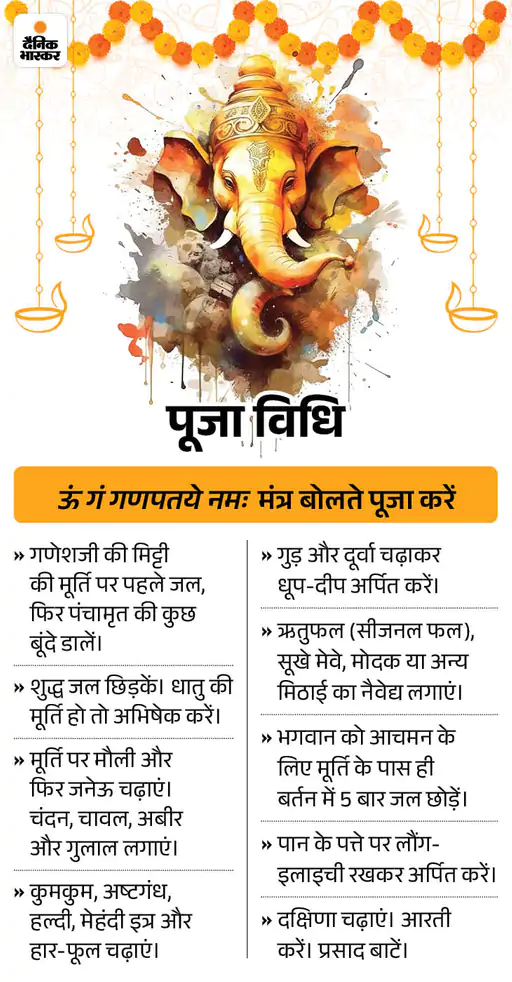According to the scriptures, Lord Ganesha’s birth occurred on the fourth day of Bhadrapada in the second half of the day. On that day, the Swati Nakshatra and Abhijit Muhurta were present. A similar cosmic alignment is happening on September 19. On this date, during the midday when the sun is directly overhead, Goddess Parvati crafted the idol of Lord Ganesha and Lord Shiva breathed life into it.

This year, the installation of Lord Ganesha coincides with Tuesday, mirroring the auspicious circumstances present during Lord Ganesha’s birth. Scholars suggest that worshipping Lord Ganesha in his Vighneshwar form during this conjunction yields desired outcomes. The installation of Lord Ganesha and the subsequent puja will have only two auspicious moments available during the day. Ideally, the installation and puja of Lord Ganesha should be performed during the afternoon. However, if time constraints arise, Ganesha’s installation can be done during any auspicious Lagna or Choghadiya Muhurta.

Here are some essential points related to Lord Ganesha’s idol:
- Lord Ganesha’s idol can be crafted from clay mixed with soil from the Ganges or any other holy river, along with the addition of Shami or Peepal tree root soil. When acquiring the soil, remove the top layer and use the inner earth.
- Besides clay, idols can also be made from cow dung, betel nut, white mud (safed madar ki jad), coconut, turmeric, silver, brass, copper, or crystal.
- The clay has natural sanctity, as it is composed of the five elements – earth, water, air, fire, and ether. Goddess Parvati used such clay to make the idol, and Lord Shiva infused it with life.
- Place the idol in the northeast, north, or east direction (between northeast and east) of your home. It’s advisable to avoid keeping it in bedrooms, under staircases, or near bathrooms. There are no specific rules for temples and pandals.
- The size of the idol should be around 12 angulas (approximately 7 to 9 inches) as per the scriptures. For homes, smaller idols are recommended. Seated Ganesha is suitable for homes, while standing Ganesha is auspicious for offices, shops, and factories.
- Install the idol in the northeast, north, or east direction (between northeast and east). You can also place it in the Brahma Sthana, the central part of your home. Avoid installing it in bedrooms, under staircases, or near bathrooms.
By adhering to these guidelines, you can perform the installation and puja of Lord Ganesha with reverence and devotion during Ganesh Chaturthi.

